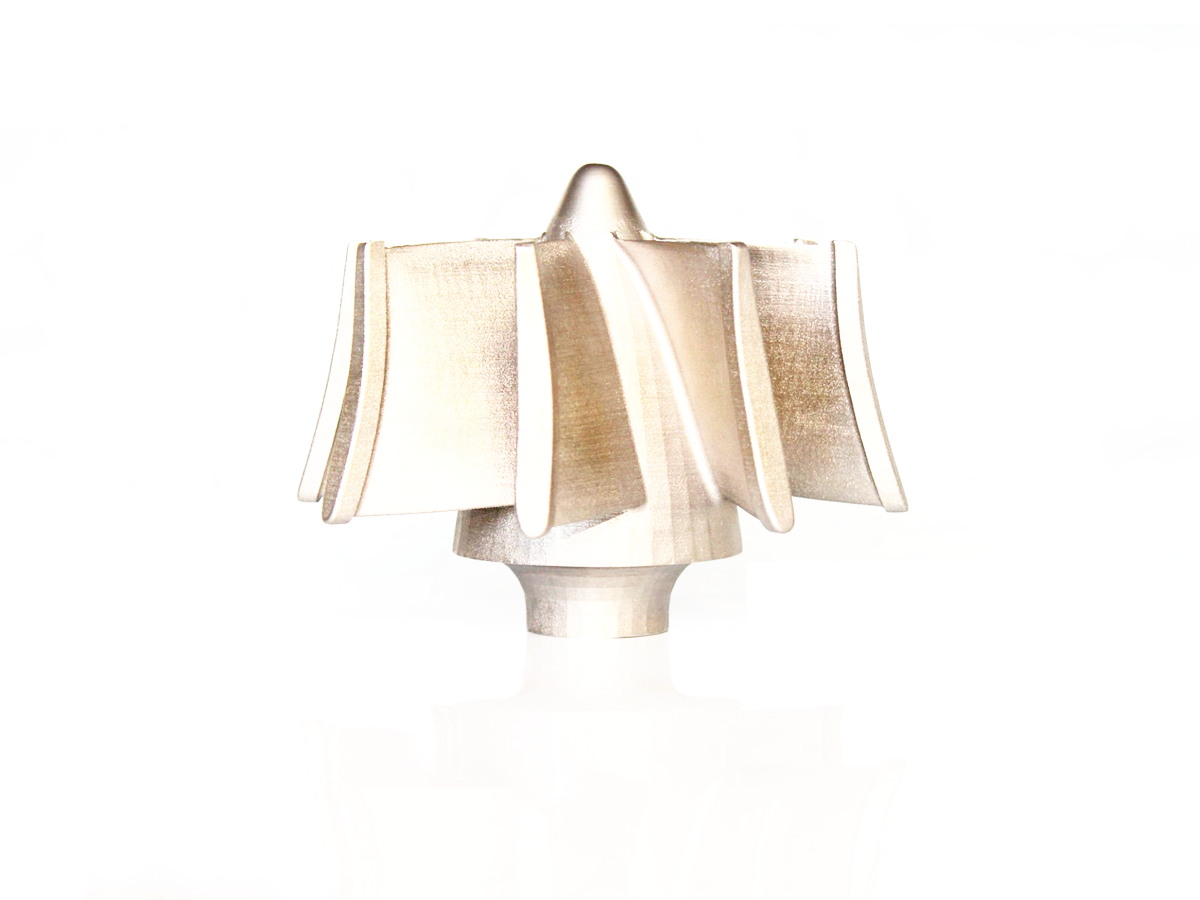Designed for the Skies: Carbon Steel 3D Printed Brackets Reinforce Aerospace Rotors
Introduction
Carbon steel 3D printing is redefining structural reinforcement in aerospace by enabling the production of lightweight, high-strength brackets that optimize rotor systems for aircraft and space vehicles. Through advanced metal 3D printing technologies such as Selective Laser Melting (SLM) and Direct Metal Laser Sintering (DMLS), aerospace-grade carbon steels like Tool Steel MS1 and AISI 4130 achieve exceptional strength-to-weight ratios, fatigue resistance, and precise dimensional control essential for flight-critical applications.
Compared to traditional forging and machining, carbon steel 3D printing for aerospace brackets allows for rapid production, weight optimization, and the integration of advanced design features critical to rotor efficiency and durability.
Applicable Material Matrix
Material | Ultimate Tensile Strength (MPa) | Yield Strength (MPa) | Hardness (HRC) | Fatigue Resistance | Aerospace Suitability |
|---|---|---|---|---|---|
2000 | 1800 | 52–54 | Excellent | Rotor structural brackets | |
950 | 655 | 28–32 | Very Good | Lightweight aerospace supports | |
1500 | 1300 | 45–52 | Excellent | High-temperature rotor brackets | |
2000 | 1850 | 52–54 | Excellent | Aerospace load-bearing frames | |
1450 | 1250 | 40–50 | Very Good | Impact-resistant rotor mounts | |
950 | 655 | 28–32 | Good | Secondary aerospace brackets |
Material Selection Guide
Tool Steel MS1 (Maraging Steel): With an ultimate tensile strength of 2000 MPa and yield strength of 1800 MPa, MS1 delivers exceptional fatigue resistance and dimensional stability, making it ideal for critical load-bearing rotor brackets in aerospace assemblies.
AISI 4130: A versatile chromium-molybdenum alloy offering a balance of strength (~950 MPa tensile) and weight savings, ideal for lightweight structural brackets and frames where moderate mechanical loads apply.
Tool Steel H13: Providing tensile strength up to 1500 MPa and excellent thermal fatigue resistance, H13 is chosen for rotor components exposed to elevated temperatures and repeated thermal cycling.
Tool Steel 1.2709 (Maraging 300): Achieving yield strengths above 1850 MPa, Maraging 300 is used in high-stress aerospace applications requiring minimal dimensional distortion and excellent fatigue life.
Tool Steel H11: Known for superior toughness and resistance to impact, H11 is applied to aerospace rotor mounts and supports operating under dynamic load conditions.
AISI 4140: Well-suited for less critical aerospace brackets, AISI 4140 combines good mechanical strength and excellent machinability, supporting secondary structures around the rotor assembly.
Process Performance Matrix
Attribute | Carbon Steel 3D Printing Performance |
|---|---|
Dimensional Accuracy | ±0.05 mm |
Density | >99.5% Theoretical Density |
Layer Thickness | 30–60 μm |
Surface Roughness (As-Printed) | Ra 5–12 μm |
Minimum Feature Size | 0.4–0.6 mm |
Process Selection Guide
Topology Optimization for Weight Savings: 3D printing enables lattice structures and minimal material designs, reducing bracket weight by up to 30% while maintaining mechanical strength.
Fatigue-Resistant Structures: Carbon steel materials like MS1 and Maraging 300 deliver long fatigue life, which is critical for rotor components subjected to high vibration and cyclic loading.
Thermal and Impact Performance: Tool steels like H13 and H11 retain their mechanical properties under temperature fluctuations and mechanical shocks typical in flight operations.
Rapid Customization: Complex geometries with integrated cable management, fastener interfaces, and stiffening ribs can be fabricated without additional assembly, improving performance and reducing costs.
Case In-Depth Analysis: MS1 3D Printed Rotor Support Bracket for Aerospace Turboshaft Engine
An aerospace manufacturer required lightweight, fatigue-resistant brackets to reinforce the rotor section of a turboshaft engine. Using our carbon steel 3D printing service with Tool Steel MS1, we produced precision brackets achieving tensile strength of 2000 MPa, yield strength of 1800 MPa, and a density over 99.5%. Topology-optimized designs resulted in a 25% weight reduction while maintaining mechanical integrity during engine certification tests. Post-processing included HIP treatment and CNC machining for final dimensional tolerances and aerospace surface finish standards.
Industry Applications
Aerospace and Aviation
Rotor and engine bracket reinforcements.
Structural components for UAVs, helicopters, and jet engines.
Mounting frames for propulsion and control systems.
Space Systems
Rotor and gimbal supports for satellites and space vehicles.
Lightweight structural brackets for launch systems.
Defense and Aviation Manufacturing
Load-bearing assemblies for military rotorcraft and unmanned systems.
Mainstream 3D Printing Technology Types for Carbon Steel Aerospace Components
Selective Laser Melting (SLM): Best for producing high-density, fatigue-resistant carbon steel aerospace brackets.
Direct Metal Laser Sintering (DMLS): Ideal for manufacturing lightweight, structurally optimized aerospace components.
Binder Jetting: Suitable for early-stage prototyping of carbon steel aerospace frames before final qualification.
FAQs
What carbon steel grades are best for aerospace 3D printed rotor brackets?
How does carbon steel 3D printing optimize strength-to-weight ratios for aerospace applications?
What post-processing treatments are needed for aerospace-qualified carbon steel parts?
Can 3D printed carbon steel components meet aerospace fatigue and durability standards?
How does 3D printing accelerate development for aerospace rotor structural reinforcements?

